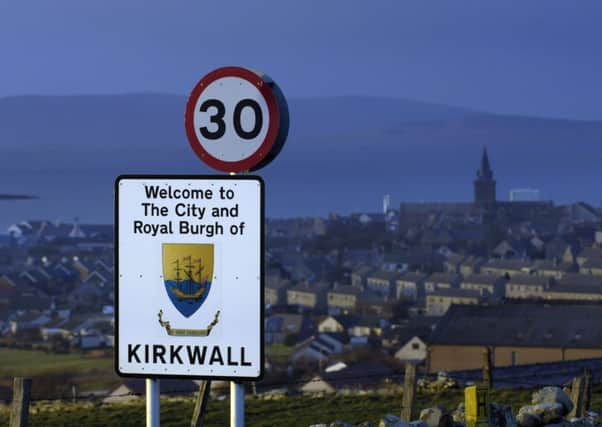Scots disposable income higher than UK average


The amount available for spending or saving after tax and National Insurance in the typical Scottish household was £16,267 a year in 2012, according to a Scottish Government report compiled from figures released by the Office for National Statistics.
Households in Glasgow have the lowest amount of disposable income per household inScotland – at £14,000 – while their counterparts in Edinburgh have an average of £19,000.
Advertisement
Hide AdAdvertisement
Hide AdThe Scottish average is slightly lower than that of the UK, where the figure is £16,791.
In inner London, the figure stands at £24,940 – more than £10,000 higher than the amount available in 1997 – while in outer London, the average amount available is £19,162, up from £11,376.
The amount of money households have left to spend has rocketed in the Highlands and Islands over the 15 years, with Orkney seeing a rise of 141 per cent.
The amount of spending money available for a typical household in Lochaber, Skye and Lochalsh, and Arran & Cumbrae, has gone up by 96.6 per cent, while Shetland has experienced a rise of 96.3 per cent since 1997.
The report said: “Levels ofdisposable incomes per head have increased more in Scotland than the UK generally since 1997.
“Looking at it in real terms, Scotland has seen anincrease of around 27 per cent, with the UK registering anincrease of 24 per cent (at 2012 prices).”
On a cash basis – not taking into account annual inflation – Scotland has seen an increase of almost 75 per cent in disposable income per household,compared with a UK increase of 71 per cent.
David Lonsdale, director of the Scottish Retail Consortium, admitted that household budgets had been squeezed following the economic downturn, but insisted that discounts were helping keep down the cost of the weekly shop.
Advertisement
Hide AdAdvertisement
Hide AdFood price inflation soared in the months following the recession but has recently fallen to its lowest level in 13 months.
Mr Lonsdale said: “Retailers areresponding to the squeeze on household budgets and strong industry-wide competition with keen prices.
“Shop prices have fallen for 13 consecutive months and food inflation is at its lowest recorded level.”
The proportion of income generated from “secondary sources”, which takes into account social benefits, has risen from 23 per cent to 27 per cent over the past 15 years.
According to the report, the rise was due to the increase in unemployment-related benefit claims during the recession.
Finance secretary JohnSwinney said: “We welcome thisreport, which shows that Scotland has higher levels of income than most areas of the UK except those around London. This underlines the fact that Scotland is a hugely wealthy and economically productive country.”
However, Scottish Labour finance spokesman Iain Gray said: “These statistics provide further evidence of the disparity in wealth which is prevalent across Scotland.”
SEE ALSO: